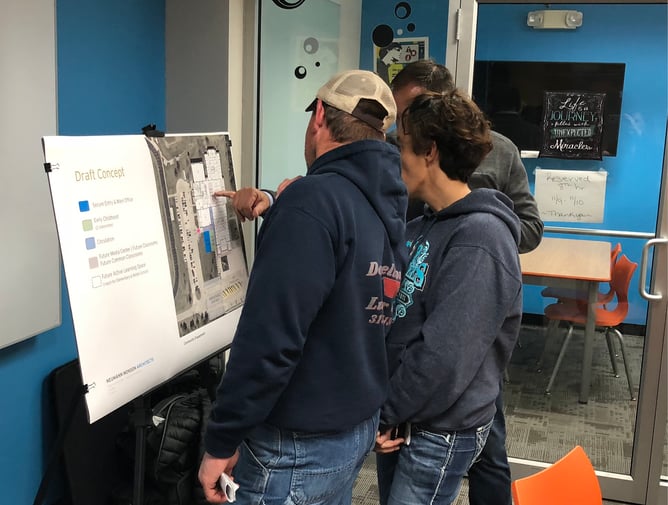How to Get Community Input on a Building Project

Stakeholder input is a vital part of any building project. Through surveys and workshops, members of your organization should contribute to the design process, voice their concerns, and share ideas. This type of collaboration leads to a project that fits the occupants’ unique needs.
Seeking external input is equally beneficial. Buildings often outlive their original occupants, so it helps to consider broader community needs.
We have worked with numerous clients who sought community input during the design process. While some have consulted the community for bond referendum campaigns, others have collaborated with their neighbors to meet multiple needs. In our experience, community input always leads to a stronger project.
This article will discuss the importance of consulting your community during the design process and the best practices for getting input.
Why Consult the Community on a Building Project?
There are many reasons to seek community input during the design process. Some public projects, like schools, rely on bond referendums for funding.
In these cases, it is necessary to bring the community together, educate them, and make a case for the project. Bond referendums are more likely to pass when people understand the need for the project and have a voice in the process.
Community input is also necessary for rezoning. Some municipalities may require town hall meetings where community members can voice their concerns before approving a development.
Beyond these contexts, community input benefits any project. Reaching out to neighbors can help you identify problems and direct design decisions.
The Stanley Center, for example, sent a survey to Muscatine residents early in the design process to identify opportunities to impact the community positively. They also worked closely with MCSA, a neighboring nonprofit, to develop solutions that mutually benefited both organizations. The result was a solar overhang that shelters those utilizing MCSA’s foodbank services.
In short, getting community input can lead to more thoughtful solutions that simultaneously address multiple needs.
Best Practices for Consulting the Community
1. Seek Input Early
Community input is most effective early in the design process. Consult your community while generating ideas, rather than waiting until design decisions are set in stone. Early input can help direct decision-making and align the project with public priorities.
Early input can also help mitigate negative feedback. Knowing you will get pushback about specific decisions can help you proactively address concerns. You may fight an uphill battle if you consult the community too late.

Engage the community at the concept-development stage.
2. Focus on Issues, Not Images
When seeking community input—especially for bond referendums—we recommend focusing on issues, not images.
It may be tempting to show renderings to gain community support. However, design is subjective, and you don’t want people to base their vote on their opinion of the building.
Instead, focus on how the project will address problems within your organization. Some school districts give public tours of their current facilities, so voters understand the conditions. Public meetings can be an opportunity to educate voters and make a case for funding.
3. Target a Diverse Group
Feedback from a diverse group of stakeholders benefits any project. Typically, we recommend clients involve a cross-section of their organization in the design process. For a school project, everyone from administrators to students should have a voice in design discussions.
The same goes for external input. The Stanley Center included demographic data within a community survey to track how well it reached different groups.
Similarly, school districts often meet with multiple organizations during a bond referendum campaign. Getting support from various community leaders will make your project more likely to succeed.
4. Be Present
Although an architect can help coordinate meetings and surveys, getting community input requires a greater level of participation from the client. When meeting with your community, be present and willing to listen.
You want everyone to know you value your feedback and want to hear their thoughts. Remember: you are the face of the project. If you want community support, be visible and open to suggestions.
Learn Techniques for Engaging Stakeholders
Feedback and collaboration are foundational to a successful building project. Thinking beyond your organization and seeking input from the community can help align your project with public priorities and can even help secure funding.
Effective community input requires careful planning. Soliciting feedback early and focusing on problems and goals improves your chances of getting community support.
Whether engaging internal or external stakeholders, there are many techniques your architect can use to solicit their thoughts and feedback. Learn more by reading about empathy-building activities used in visioning workshops.